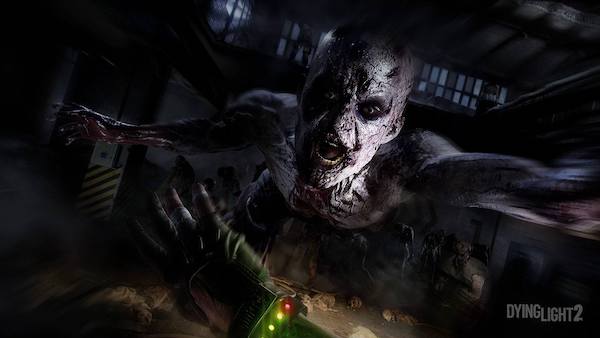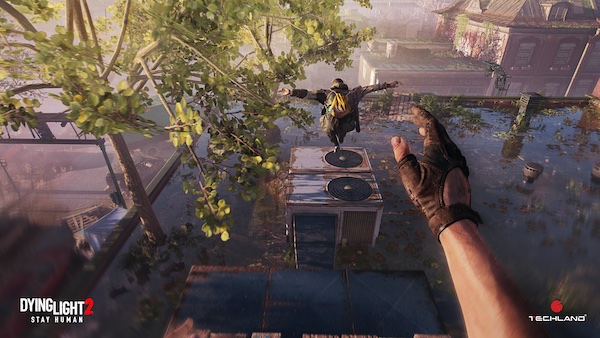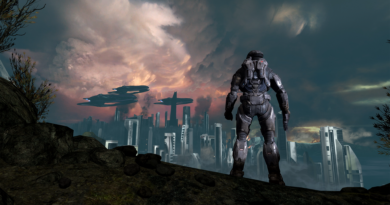Dying Light 2 : Stay Human
Once you take away the open world trappings so obviously mined from Ubi-worlds. Facilities, water towers, bounties, crafting and oh-so-many collectibles – Dying Light 2 is left with two distinct things: parkour and its day/night cycle. One of these is great. Moving around the city is floaty and accommodating, provided you work a little to upgrade your stamina with – you guessed it – collectibles. It works with one contextual button that mostly knows what you want to do and where you want to go. It is a combination of Assassin’s Creed and Breath of the Wild, with surfaces offering climbable handholds and platforms. While your stamina depletes at a sometimes-alarming rate as you shimmy upwards, often sending you tumbling back down to re-evaluate and try again.
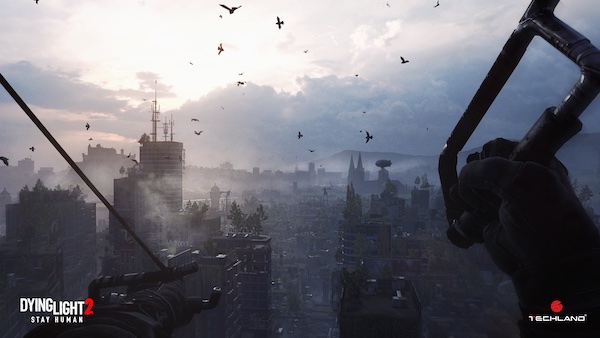
Many hours into the main quest line, your traversal options broaden. With additional tools that see you grappling and gliding across areas you previously had to run, jump, duck and weave across. Indeed, for much of the beginning of the game, it’s often easier to just run along at ground level. As you explore this contextually awful environment, it won’t take long to see much repeated design to its rooftops, an almost Diablo-esque approach.Making the vast city feel that bit smaller, offering modular variations of architecture you have already covered. That said, if the parkour was what you enjoyed from Dying Light, this delivers a decent upgrade to the experience. Which, honestly was the only aspect that kept me playing.
The bad things come out at night
The day/night cycle I’m not so hot on. I don’t enjoy time limits, so the constant countdown to infection and the heart-in-mouth race to find UV light before turning into a zombie did not appeal to me. However, I can appreciate that it is something that some will enjoy and there is an entire branch of missions that take place at night. A time when the infected leave buildings and flood the street. Often instigating intense chases as you need to find a source of UV light to stop them tearing you apart. The fact that buildings are somewhat cleared out at night makes exploring some of the heavily-infected interiors – scooping up their goodies – a much more possible experience. Although again there is that constant need to be aware of your infection status.

I had a night mission bug out on me in a strange way early on. It told me to wait for night to proceed, but I stubbornly just followed the marker and the mission allowed me to complete it anyway. Which was quite funny, because while it was obviously meant to be tense. I managed to duck out into the full sunlight a few times to renew my UV levels and then just continued with the mission no worries.
All filler, not much killer.
Dying Light 2 is janky almost all the time, with design corners that, if not cut, are certainly shaved. Mission-givers will snap into place as barely animated delivery points or teleport hundreds of metres away after you’ve just spoken to them to finish a quest. Markers will lead you on strange and frustrating chases before you finally work out where you need to be or what you need to do to trigger the next phase. In one early mission.
I almost reached a game-breaking point as I’d gone off a bit from the mission’s parameters – which wanted me to chase someone. Falling to street level and dying. On respawn, it placed me well away from where I should have been to continue the chase. It took me about seven attempts to get back on track, each one deeming I was leaving the mission zone and killing me. It could have easily been game over for me there, as there is no way to peel back checkpoints or load earlier saves.
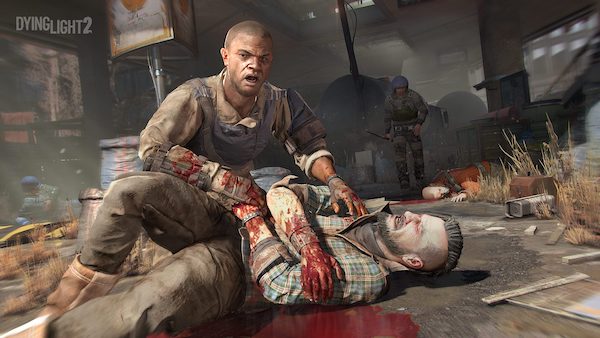
There are many side quests, some designed, others of a more random and repeated nature. These are only worthwhile for gaining XP to upgrade your combat or parkour. NPCs in need are strangely funny, too, because they’ll just yell out for help or call to you for hours. I chuckled each time I skirted close to them on other errands, completely ignoring them. They aren’t necessary because you can level up, albeit slower, just by running, doing parkour and fighting enemies. It’s a bit like levelling up acrobatics in Morrowind (oh, God, the memories of jumping everywhere).
Open World Gaming: The Game
One game Dying Light 2 reminded me of a lot is The Division. The city is massive in a repetitive way. There are so many things you can do to get distracted, yet all of it can be boiled down to a handful of ideas that are then repeated and randomised to keep you busy. If you are in the mood for this, and I recognise that it’s a legitimate gaming headspace for many, then Dying Light 2 will offer hours (500?) of exploration and running around to meet quest markers. But if you want richer meat, then I’m afraid that this is Open World Gaming: The Game.
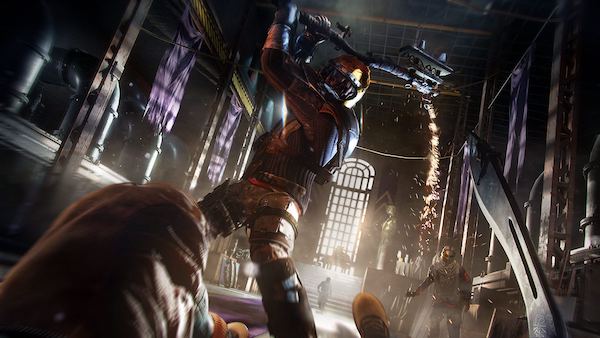
It doesn’t help that the story takes itself far too seriously. I couldn’t tell you what it’s about as I started skipping every story scene after a short while. Neither could I tell you which faction is worth sticking to. I only chose to align with the one gave me the benefits I desired. It tells you what will happen when you assign a facility to one or the other faction.
Maybe a night at The Winchester?
My overall feeling with Dying Light 2 is it’s the kind of filler game that does what it needs to do. Perfect to pick up when on special or if you’re looking for busy work during a release lull. It would have been nice to gain the grapple and glider much earlier. I fear many players will lose interest before they are implemented. It does feel like half the campaign is a tutorial, which funnels you down the path to skipping story scenes and blindly following quest markers.
The main reliance on melee combat is a good decision, there is no need to complicate the weapons system with guns and ammo. If you can brush aside a weak storyline. Dying Light 2 offers serviceable missions, an overwhelming collection of distractions, and a large city that is impressive to behold yet ultimately repetitive to traverse.
